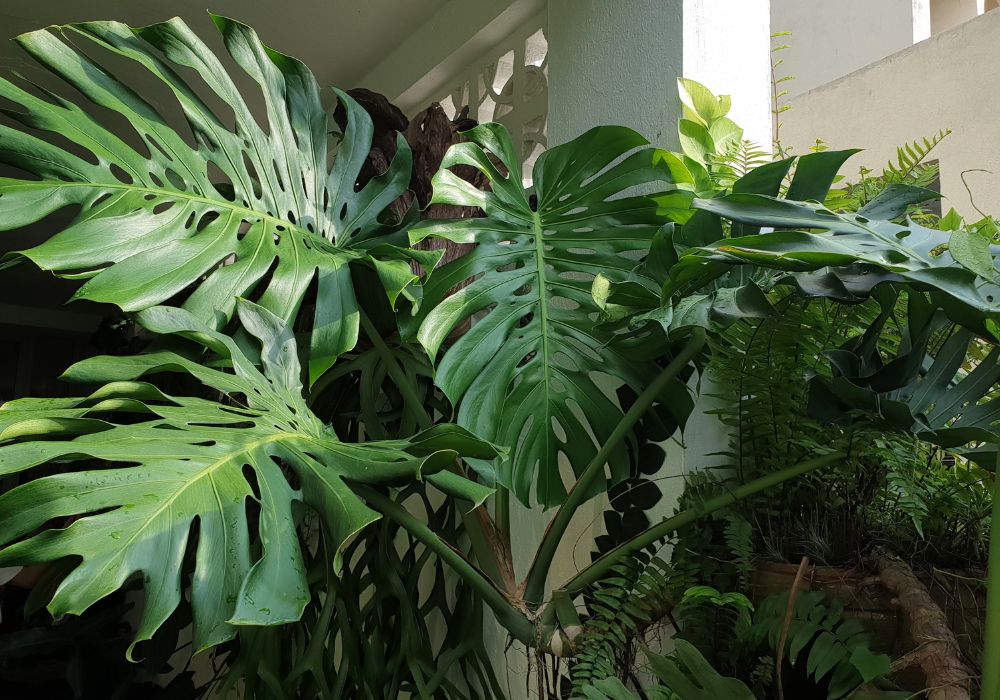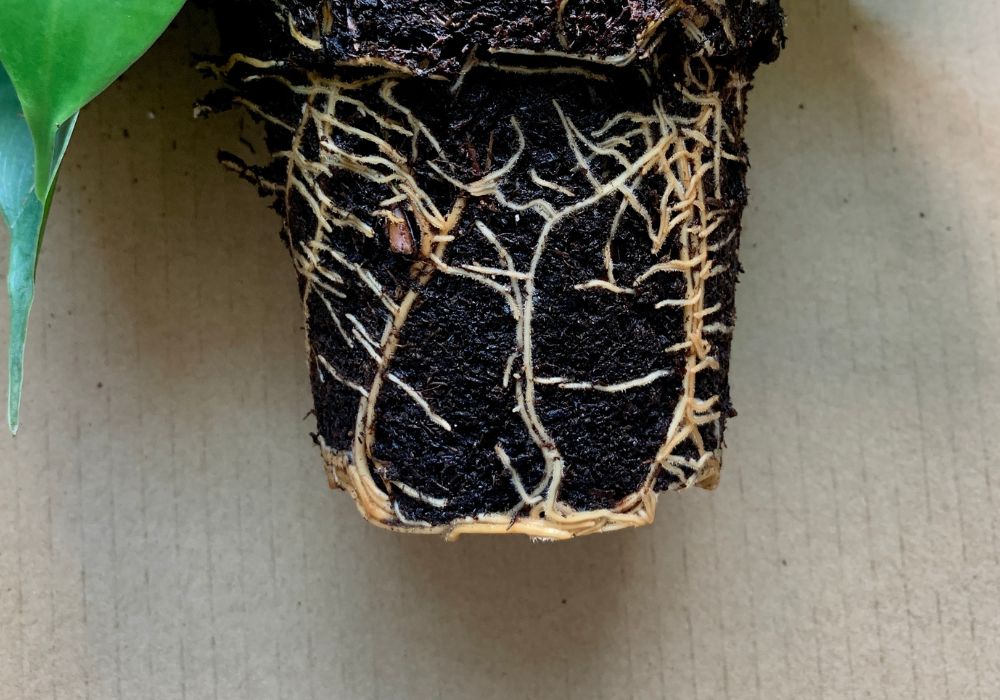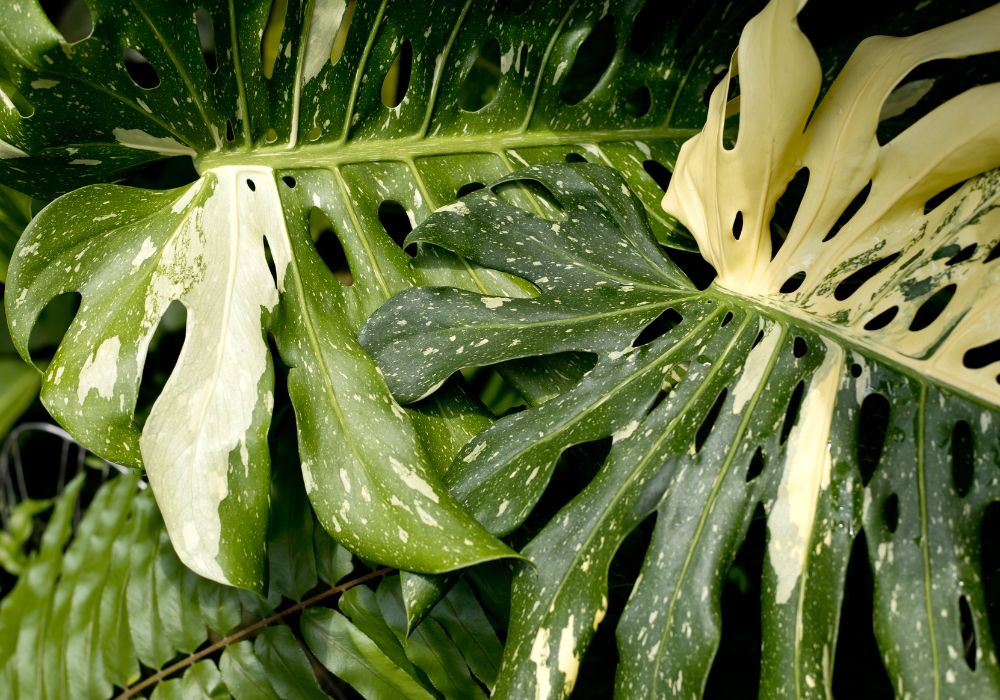
When selecting a pot for your dragon tail plant, consider its growth habits and root system. The pot should provide ample space for the plant to spread out comfortably without being too cramped. Opt for a pot that is slightly larger than the current root ball of the plant to allow room for growth. Make sure the pot has drainage holes to prevent waterlogged soil, which can lead to root rot. Additionally, choose a pot that complements the aesthetic of your dragon tail plant and the surrounding decor.
Ceramic or terracotta pots are popular choices for dragon tail plants as they are sturdy and provide good airflow to the roots. Plastic pots are lightweight and retain moisture well, but may not be as aesthetically pleasing. Consider the weight of the pot if you plan to move it around frequently, as a heavier pot may be more stable but harder to transport. Ultimately, the right pot for your dragon tail plant is one that meets its practical needs while also enhancing the visual appeal of your indoor or outdoor space.
The Best Soil Mix for Thriving Dragon Tail Plants
Dragon tail plants, also known as Dracaena marginata, are stunning additions to any indoor space with their long, elegant leaves. To keep these beauties thriving, it’s crucial to select the right soil mix for them. A well-draining soil mix is key for dragon tail plants, as they dislike sitting in waterlogged soil that can lead to root rot. Opt for a potting mix that contains a combination of peat moss, perlite, and sand to ensure good drainage and aeration for your plant’s roots.
Additionally, dragon tail plants appreciate a slightly acidic soil pH ranging between 6.0 to 6.5. You can achieve this by mixing in some acidic amendments like pine bark or sphagnum peat moss to your soil blend. Remember to repot your dragon tail plant every 2-3 years to refresh the soil and provide it with essential nutrients for continued growth. By choosing the right soil mix, you’re setting your dragon tail plant up for success and vibrant health.
Watering Tips for Keeping Your Dragon Tail Plant Happy
When it comes to watering your dragon tail plant, the key is to strike a balance. These plants prefer to be watered when the top inch of the soil is dry to the touch. Stick your finger into the soil to check – if it feels moist, hold off on watering for a bit. Overwatering can lead to root rot, so it’s better to err on the side of underwatering with these beauties.
Another handy tip for happy dragon tail plants is to make sure their pots have proper drainage. Sitting in waterlogged soil can spell disaster for these plants, so be sure to use a pot with drainage holes at the bottom. When you do water, pour water slowly and evenly over the soil until you see it dripping out of the drainage holes – this ensures that the roots are getting a good drink without drowning them. Remember, less is often more when it comes to watering your dragon tail plant!
Discover More – Dragon Tail Plant Care- Your Essential Guide
Understanding the Light Needs of Your Dragon Tail Plant
When it comes to providing the right amount of light for your dragon tail plant, think of it like a Goldilocks situation – not too much, not too little, but just right. These plants thrive in bright, indirect light, so placing them near a window where they can bask in the sun’s gentle rays without getting scorched is ideal. If you notice your dragon tail plant’s leaves are turning yellow or brown, it might be a sign that they’re getting too much direct sunlight. On the other hand, if the leaves start to look leggy or stretched out, it could mean they’re not getting enough light.
It’s essential to pay attention to the light conditions in your home and adjust the placement of your dragon tail plant accordingly. If you notice that the plant isn’t looking as vibrant as it should be, try moving it to a spot where it receives more or less light and see how it responds. Remember, finding the perfect balance of light for your dragon tail plant is key to keeping it happy and healthy.
Temperature and Humidity Requirements for Dragon Tail Plants
Dragon Tail plants, also known as Dracaena marginata / Ceylon Creeper, thrive in average household temperatures ranging from 65°F to 80°F. These tropical beauties prefer a warm and cozy environment, so be sure to keep them away from drafts or sudden temperature fluctuations. Monitoring the temperature in your living space will undoubtedly keep your Dragon Tail plant happy and healthy.
In terms of humidity, Dragon Tail plants are relatively low-maintenance and can adapt to normal household humidity levels. However, if you live in a particularly dry climate or notice the air in your home is exceptionally dry, you can increase humidity levels by placing a humidifier nearby or occasionally misting your plant with water. Keeping an eye on the humidity levels will help prevent any issues like leaf browning or drying out for your Dragon Tail plant.
Discover More – Lemon Lime Pothos Care – Achieve Bright, Healthy Plants
Feeding Your Dragon Tail Plant: Fertilizing Tips
When it comes to feeding your dragon tail plant, fertilizing can play a crucial role in promoting healthy growth and vibrant foliage. Opt for a balanced liquid fertilizer specifically formulated for succulents, and dilute it to half strength to prevent over-fertilization. During the growing season in spring and summer, feed your dragon tail plant every 4-6 weeks to provide it with the nutrients it needs to thrive.
In the winter months, when growth slows down, reduce the frequency of fertilizing to every 8-10 weeks to avoid nutrient buildup in the soil. Always water your plant thoroughly before fertilizing to prevent root burn, and be sure to apply the fertilizer evenly around the base of the plant. With proper fertilization, your dragon tail plant will stay healthy and happy, rewarding you with its striking beauty.
Pruning and Propagating Your Dragon Tail Plant
When it comes to pruning your dragon tail plant, it’s important to do so thoughtfully to encourage healthy growth. Look for any yellowing or damaged leaves and carefully trim them off using clean, sharp scissors. Pruning off any leggy growth will also help your plant maintain a bushy and compact appearance. If you want to propagate your dragon tail plant, the easiest method is through stem cuttings. Simply snip off a healthy stem with at least a few leaves attached and place it in water or a well-draining soil mix to encourage root growth.
Propagation can be a fun way to expand your dragon tail plant collection or share with friends and family. You can also propagate your plant by gently separating the offsets that grow at the base of the main plant. These baby plants can be potted up individually once they have developed roots of their own. Remember to keep the soil slightly moist and provide indirect light to help your propagated cuttings or offsets thrive.
Discover More – Hawaiian Pothos Care- Growing Healthy Vines
Common Pests and Diseases to Watch Out for in Dragon Tail Plants
Dragon tail plants are usually resilient, but like any other plant, they can fall victim to pesky pests and troublesome diseases. One common pest to watch out for is spider mites, those tiny villains that suck the life out of your plant’s leaves, leaving behind their telltale webbing. Keep an eye out for these critters, especially if you notice yellowing or stippling on the foliage. If you spot them, don’t panic! A gentle wipe down with a damp cloth or a spray of neem oil can help show these intruders who’s boss.
Another troublesome pest that may bother your dragon tail plant is mealybugs. These cottony nuisances can cluster on the leaves and stems, draining your plant’s energy. A mixture of water and mild soap applied directly to the affected areas can help banish these unwanted guests. Remember, vigilance is key when it comes to keeping your dragon tail plant free from pests and diseases.
How to Support Your Dragon Tail Plant as it Grows
As your dragon tail plant matures and starts growing, it may need a little help to support its graceful, trailing vines. One simple way to assist your plant is by providing it with a trellis or moss pole to cling onto as it grows upward. This will help prevent the vines from becoming tangled and will encourage the plant to grow vertically, creating a stunning and structured look.
Another method to support your dragon tail plant is by gently tying the vines to the trellis or pole using soft plant ties or strings. Be sure not to tie them too tightly, as this can constrict the growth of the plant. By securing the vines in place, you can guide the plant’s growth in a desired direction, enhancing its overall appearance and promoting a healthier structure.
Discover More – Silver Satin Pothos Care- Tips for Shiny Leaves
Troubleshooting Common Issues with Your Dragon Tail Plant
If your Dragon Tail plant is looking a bit under the weather, don’t fret! One common issue you might encounter is yellowing leaves. This could be a sign of overwatering, so make sure to let the soil dry out between waterings. On the flip side, if the leaves are becoming wrinkled and dry, your plant might be a bit thirsty. Give it a good drink and watch it perk back up.
Another pesky problem you might face is leggy growth. If your Dragon Tail plant is stretching out and becoming sparse, it might not be getting enough light. Try moving it to a brighter spot or supplementing with a grow light. Remember, these plants love bright, indirect sunlight to thrive. So, give them the light they need, and you’ll see those lush, compact leaves bouncing back in no time.
Decorating with Dragon Tail Plants: Creative Ideas
When it comes to decorating with Dragon Tail plants, the possibilities are endless. These unique and eye-catching plants can add a touch of exotic charm to any space. One creative idea is to display your Dragon Tail plant in a hanging macramé planter to add a bohemian flair to your room.
Another fun way to incorporate Dragon Tail plants into your decor is by placing them in colorful ceramic pots and arranging them in a grouping on a sunny windowsill. The contrasting colors of the pots will make the vibrant green of the plants pop, creating a beautiful and cheerful display. Whether you choose to hang them, place them on a shelf, or cluster them together, Dragon Tail plants are sure to bring a fresh and stylish look to your home.
Discover More – Golden Pothos Care- Easy Tips for Thriving Plants
Creating a Relaxing Atmosphere with Your Dragon Tail Plant
When it comes to creating a relaxing atmosphere with your Dragon Tail plant, consider placing it in a cozy corner of your living room or by a sunny window in your bedroom. The lush green foliage and unique shape of the Dragon Tail plant can add a touch of tranquility to any space, making it the perfect addition to your home decor.
To enhance the calming effect of your Dragon Tail plant, pair it with other houseplants with similar care requirements. This way, you can create a harmonious green oasis that not only looks beautiful but also promotes a sense of peace and well-being. Experiment with different plant layouts and arrangements to find the perfect setup that suits your style and helps you unwind after a long day.
Celebrating the Beauty of Dragon Tail Plants: Inspiration from Plant Lovers
Dragon tail plants, with their unique and eye-catching foliage, have captivated the hearts of plant lovers around the world. From their cascading leaves to their vibrant shades of green, these plants bring a touch of nature’s beauty into any indoor space. Plant enthusiasts often find themselves mesmerized by the elegant flow of the dragon tail plant’s leaves as they gracefully drape over their pots, creating a serene and tranquil ambiance in any room.
Whether displayed on a shelf, hanging from a macrame plant hanger, or placed as a centerpiece on a table, dragon tail plants never fail to add a pop of life and color to any living space. With their low-maintenance nature and striking appearance, these plants have become a favorite among plant lovers looking to enhance the aesthetics of their homes. The versatility of dragon tail plants allows them to be incorporated into various decorating styles, from modern and minimalist to bohemian and eclectic, making them a beloved choice for plant enthusiasts of all tastes.
Discover More – Green Queen Care- Keep Your Plant Lush and Green
How often should I water my Dragon Tail plant?
Water your Dragon Tail plant when the top inch of soil feels dry to the touch. Make sure not to overwater as these plants prefer slightly drier conditions.
What kind of light does a Dragon Tail plant need?
Dragon Tail plants thrive in bright, indirect light. Avoid direct sunlight as it can scorch the leaves.
How can I propagate my Dragon Tail plant?
You can propagate your Dragon Tail plant by taking stem cuttings and rooting them in water or soil. Make sure the cutting has at least a couple of leaf nodes for successful propagation.
What are some common pests that can affect Dragon Tail plants?
Spider mites and mealybugs are common pests that can infest Dragon Tail plants. Keep an eye out for any signs of infestation and treat them promptly.
How can I support my Dragon Tail plant as it grows?
You can use a small trellis or stakes to support your Dragon Tail plant as it grows taller. This will help prevent the stems from bending or breaking.
Can I keep my Dragon Tail plant outdoors?
Dragon Tail plants can be kept outdoors in warm, humid climates. Just make sure to protect them from direct sunlight and strong winds.



